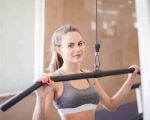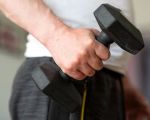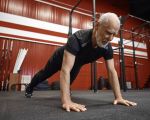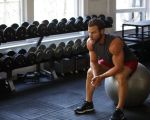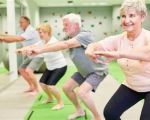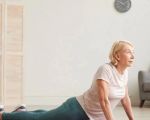
- Importance-of-Flexibility-for-Men
- Key-Components-of-Flexibility-Training
- Effective-Gym-Workouts-to-Improve-Flexibility
- Practical-Tips-for-Sustainable-Flexibility-Gains
- Real-Life-Examples-of-Flexibility-Improvement
1. Why Flexibility Matters for Men’s Fitness
Flexibility is often an overlooked component in men’s gym workouts, yet it plays a critical role in overall physical health and athletic performance. Improved flexibility enhances joint mobility, reduces the risk of injuries, and promotes better posture. Many men focus on strength training or cardio but neglect the benefits that come from dedicated flexibility exercises. For instance, limited flexibility in the hips or hamstrings can restrict movement patterns, leading to compensations and chronic pain over time.
Furthermore, flexibility contributes to faster recovery after intense workouts by improving blood flow and reducing muscle stiffness. It also supports balance and coordination, which are essential for both daily activities and sports. For men who want to maintain an active lifestyle into older age, prioritizing flexibility is indispensable. This is why integrating gym workouts specifically designed for improving flexibility is a smart approach.
1.1 Flexibility vs. Mobility: Understanding the Difference
It’s important to distinguish between flexibility—the ability of a muscle to lengthen—and mobility, which refers to the range of motion available at a joint. Both are interconnected but require slightly different training approaches. Flexibility exercises often focus on muscle elongation, while mobility work emphasizes joint function and control. The best gym workouts for improving flexibility in men blend both elements to achieve optimal results.
2. Key Components of Flexibility Training for Men
A well-rounded flexibility routine in the gym targets multiple muscle groups and uses various techniques to maximize gains. Here are three critical components to include:
2.1 Dynamic Stretching
Dynamic stretches involve controlled movements that gently take muscles through their full range of motion. These are excellent as part of a warm-up routine before strength or cardio workouts, preparing the body for activity by increasing blood flow and muscle temperature. Examples include leg swings, arm circles, and walking lunges.
2.2 Static Stretching
Static stretching is performed by holding a stretch position for a sustained period, typically 20 to 60 seconds. This method is most effective when done after a workout to help lengthen muscles and reduce stiffness. Target areas like the hamstrings, hip flexors, and shoulders are especially beneficial for men seeking to improve flexibility.
2.3 Myofascial Release
Myofascial release techniques, such as foam rolling, help break down muscle knots and improve tissue elasticity. Incorporating these tools in gym sessions can significantly enhance the effectiveness of flexibility training, aiding muscle recovery and promoting deeper stretches.
3. Effective Gym Workouts to Improve Flexibility for Men
Designing a gym routine aimed at boosting flexibility involves combining various exercises and stretches strategically. Below is an example of a comprehensive workout plan that targets key flexibility areas:
3.1 Lower Body Focus
– Hamstring Stretch with Resistance Band: Using a resistance band while lying on your back, slowly extend one leg upward to stretch the hamstrings. Hold for 30 seconds per side. This stretch helps prevent common tightness that affects men who sit for long periods.
– Hip Flexor Lunge Stretch: Step into a deep lunge position while keeping the back leg extended and hips pushed forward. Hold for 40 seconds and switch sides. This exercise improves hip mobility critical for squats and running.
3.2 Upper Body Focus
– Chest Opener Stretch: Using a foam roller placed vertically along the spine, gently extend your arms overhead to stretch the chest and shoulders. This helps counteract the forward shoulder posture common in desk workers.
– Thoracic Spine Rotations: In a quadruped position, place one hand behind your head and rotate your upper body towards the ceiling. This dynamic mobility drill improves spinal flexibility and reduces back stiffness.
3.3 Full Body Mobility Flow
A fluid sequence combining movements like deep squats, arm swings, and controlled twists helps integrate flexibility gains into functional movement. Performing this flow at the start or end of your workout primes the nervous system for better muscle control and range of motion.
4. Practical Tips for Sustainable Flexibility Gains
Consistency is key when improving flexibility. Here are some professional suggestions to help maintain progress:
4.1 Prioritize Proper Warm-Up
Engage in dynamic stretching before workouts to prepare muscles and joints for activity. Skipping warm-ups increases injury risk and reduces stretch effectiveness.
4.2 Breathe and Relax During Stretching
Holding your breath or tensing up defeats the purpose of stretching. Practice deep, even breathing to encourage muscle relaxation and deeper elongation.
4.3 Avoid Overstretching
While pushing limits can feel productive, overstretching can lead to strains or damage. Aim for gentle tension and progress gradually to avoid setbacks.
4.4 Incorporate Flexibility Training into Weekly Routine
Integrate at least 3 flexibility-focused sessions per week. Even short daily sessions yield noticeable improvements over time.
For men looking to equip themselves with the best gear to complement their flexibility training, Fitness offers a curated selection of equipment and apparel designed to enhance comfort and performance during stretching and workouts.
5. Real-Life Examples of Flexibility Improvement in Men
Take the story of Mike, a 35-year-old office worker who struggled with lower back pain and tight hips after years of sedentary work. After incorporating a gym routine centered on flexibility, including hamstring stretches and foam rolling, Mike noticed a significant reduction in pain and increased ease in daily movements within just six weeks. His performance in recreational sports like basketball also improved, thanks to better joint mobility.
Another example is Chris, an amateur weightlifter who realized his progress plateaued due to restricted shoulder flexibility. By adopting a flexibility-focused regimen with thoracic rotations and chest openers, Chris enhanced his overhead lifts, reduced discomfort, and prevented recurring injuries.
These stories highlight how targeted gym workouts for improving flexibility not only aid physical health but also enhance performance and quality of life.


